Jackson Hole Wildlife Log Early January 2017
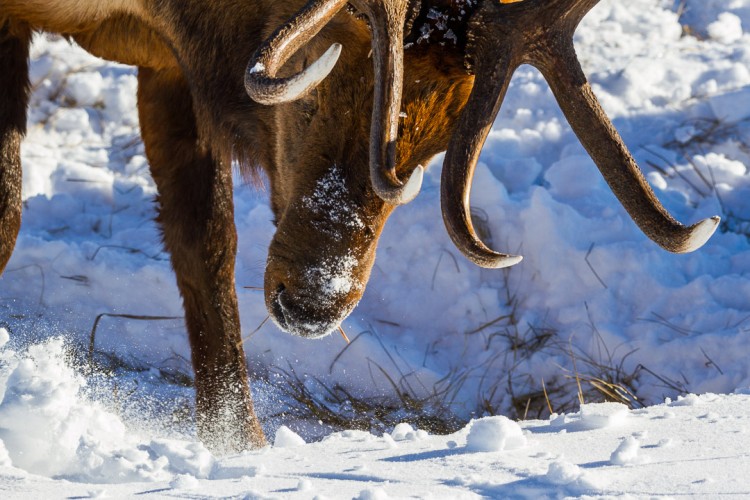

Welcome to the Jackson Hole Ecotour Adventures Wildlife Log for early January 2017. In each log we provide updates on recent sightings from trips in Grand Teton and Yellowstone National Parks! The Greater Yellowstone Ecosystem is a dynamic environment, with wildlife constantly on the move and changing behaviors throughout the changing seasons, read on to learn more about the first week of 2017! (And check out the full gallery here)
The new year brought snow and cold temperatures to the Jackson Hole Valley, a winter wonderland which during the month of December saw above average snowfall. Snow depth dramatically influences wildlife movements and locations as animals attempt to find suitable habitats to endure the cold winter.
Predators
Early in the week Ecotour Guides found wolves, coyotes, and foxes in Grand Teton National Park, known as a triple dog day as all three species of dogs found in the Greater Yellowstone Ecosystem were spotted! We think the wolves belong to the Lower Gros Ventre Pack, see video here.

Birds

Cold temperatures last week hit close to -30 degrees fahrenheit, freezing up waterways and covering everything with frost. Waterfowl have been condensed to moving or spring warmed waters such as Kelly Warm Springs. We’ve also observed pintails, gadwall, bufflehead, common and barrows goldeneye, common merganser, ring necked ducks, trumpeter swans and canada geese.
Rough Legged Hawks are still being viewed in the valley, having traveled here from summer nesting grounds above the arctic circle! They will continue south across much of the United States before making a return trip later this spring. Our conservation partners at the Teton Raptor Center currently have several birds ‘backpacked’ with GPS transmitters to learn more about their epic 2000+ mile migrations!
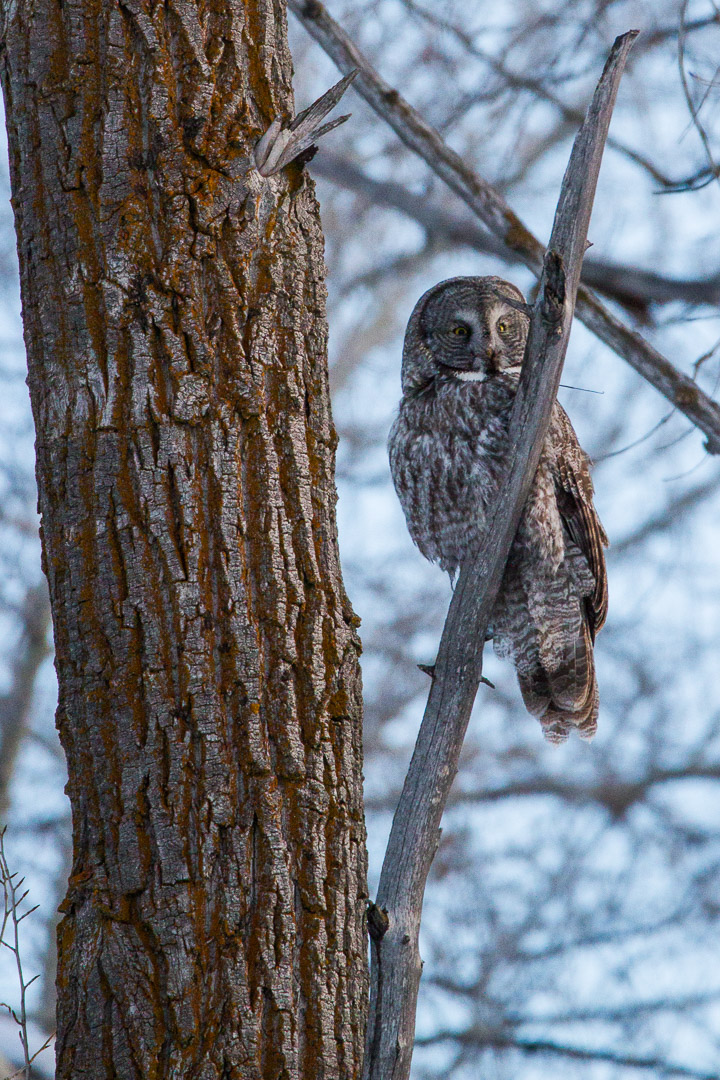
flying in a cottonwood forest while out on a safari. At least one of the birds carries a white band from a study being conducted by our conservation partners at the Teton Raptor Center. The largest owl in North America, great grays are one of our favorite sightings in Jackson Hole.
Greater sage grouse were spotted three times last week. These sagebrush obligate birds depend on the sagebrush plant community to survive and sadly are in decline across their western range. Check out our photo gallery of the week for photos!
Big Game
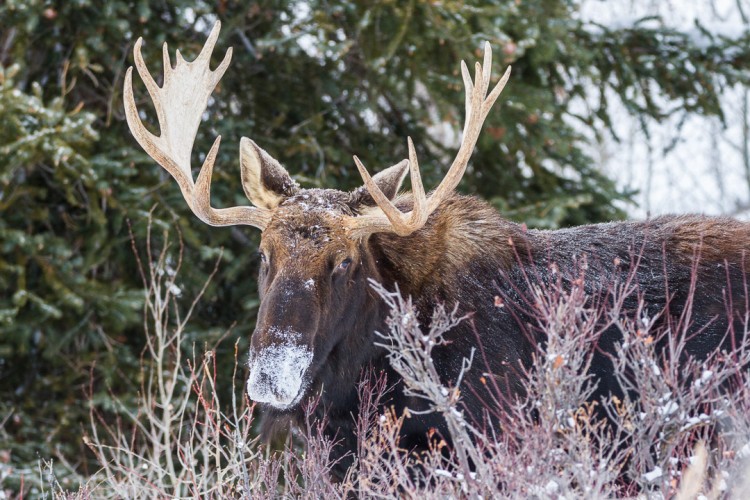
Moose have been prevalent along waterways where they can forage on willow, cottonwood, and other riparian (water loving) tree and shrub species. With long legs and a high stepping walk, moose are better adapted to deep snows than other hooved mammals.
Mule deer are concentrated along East Gros Ventre Butte adjacent Highway 189/91, attempting to forage through deepening snows. This section of road has some of the highest collision rates of vehicles with deer, drive safe and watch out! To learn more about reducing collisions in Teton County please check out our conservation partners The Jackson Hole Conservation Alliance, Greater Yellowstone Coalition, and Jackson Hole Wildlife Foundation.
Over the weekend the National Elk Refuge began supplemental feeding of elk, a program that has been around since 1912. Ecotour Adventures offers a Winter Wildlife Experience which includes a wildlife safari of Jackson Hole, Refuge Sleigh Ride, and visit to the National Museum of Wildlife Art, follow the link to learn more!
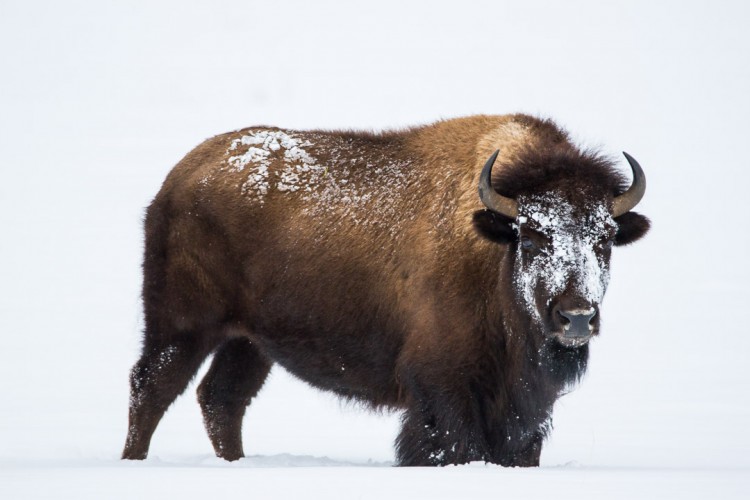
Bison are moving on to the National Elk Refuge, though small groups are still being observed Grand Teton National Park like this female. With thick coats and layers of fat providing insulation frost often forms on the backs of these giants!
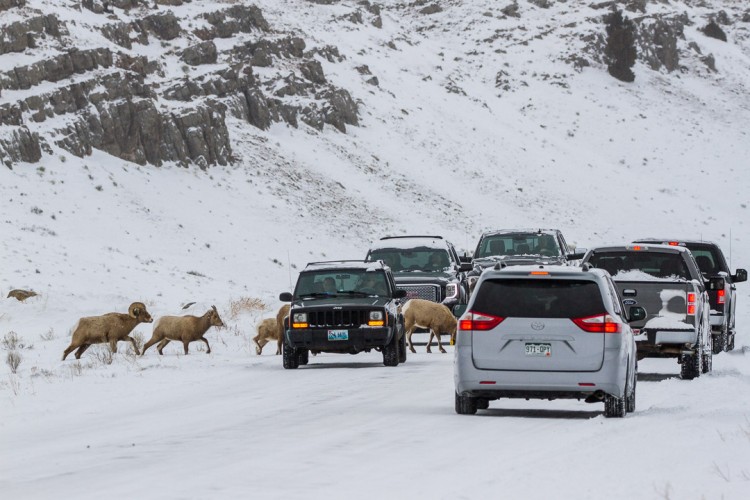
Wintering bighorn sheep occupy the National Elk Refuge, and have been coming into close contact with both elk and pronghorn. These sheep often approach vehicles to lick salt. Unfortunately this behavior can aid in the spread of pneumonia which has caused large mortality in the herd before, please do not allow them to do so!
Ecotour Guides counted at least 77 pronghorn antelope on the refuge last week. Typically pronghorn from Grand Grand Teton National Park travel 100 miles south of Jackson Hole to winter in a more hospitable climate, but a record number have decided to stay this year.
With wildlife concentrated in the valley floors, winter wildlife watching is a must do for Jackson Hole, we have many more photos of sightings from the week available on our facebook page. To learn more about going on an Ecotour Adventure visit our website or call (307) 690-9533. We hope to see you soon!
Photos and blog by Naturalist Josh Metten













